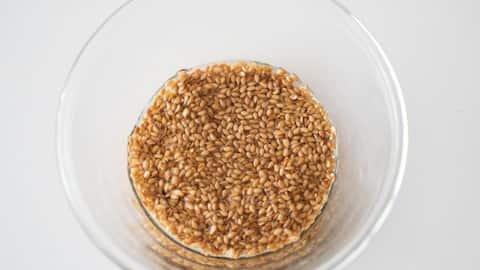Ancient grain, modern marvel: Health bounty of farro
What's the story
Farro, an ancient wheat grain originating in Mesopotamia, is primarily known as emmer wheat in the US and Europe. This versatile grain serves as a wholesome alternative to rice, quinoa, and barley and is appreciated for its nutty flavor and chewy texture. Whether enjoyed alone or incorporated into stews, salads, or soups, let's explore the top five unique attributes of farro.
Benefits
Protein powerhouse
Farro, a protein-rich grain akin to quinoa, surpasses brown rice and whole-grain wheat. Teaming up with plant-based foods like legumes, it forms a complete protein source, crucial for vegetarians and protein enthusiasts. Higher protein intake is linked to reduced calorie consumption, aiding weight loss, and may support heart health by lowering blood pressure and LDL cholesterol.
Weight loss
Satiating grain
Farro, with its 170 calories per 47-gram serving, emerges as a weight-friendly substitute for refined grains. Packed with protein and fiber, it curbs appetite, fostering a sense of fullness. Its low glycemic index ensures a steady blood sugar rise, preventing energy dips and cravings. Studies underscore the association between daily whole grain intake and a lower BMI, highlighting farro's potential in a weight-conscious diet.
Who must avoid
Farro and gluten
While farro has gluten, the notion that soaking and sprouting may make it more tolerable for gluten-sensitive individuals is not supported by studies. All farro varieties are forms of wheat, making them unsuitable for those with celiac disease. While research hasn't specifically examined farro's impact on gluten sensitivity, caution is advised, as other ancient grains have shown potential toxicity for individuals with gluten-related conditions.
How to chose
Gaining prominence in supermarkets
Farro, once hard to find, is now stocked in major supermarkets and healthy food stores. Sold dry, it is cooked in water to achieve a soft, chewy texture. Available in whole grain, pearled, and semi-pearled varieties, whole grain farro retains the most nutrients and fiber. While pearled and semi-pearled versions cook faster, whole grain options offer optimal nutrition.
